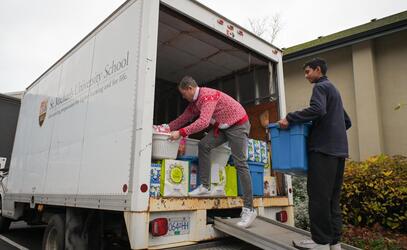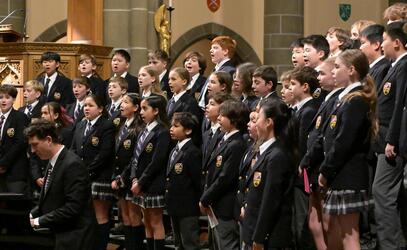As adults, we sometimes forget how difficult it can be to navigate the social nuances of humour. With decades of trial and error under our belts, most of us effortlessly enjoy a bit of wordplay with our friends and colleagues. Occasionally a line doesn’t land well, but even then we have a pretty good idea of how to move forward.
Middle School students also love to laugh, but lack those years of experience. As with so many aspects of their lives, they’re beginning to test former boundaries and their experimentation with humour is no exception. At times, this leads to riotous laughter. Unfortunately, it also results in moments of profound hurt when an attempt at humour goes astray.
But what actually makes something funny and how can we help our Middle School students navigate the pitfalls?
One way is to offer some structure to support their reflections. The Humor Research Lab (HuRL – get it?) of the University of Colorado Boulder has done some excellent work in breaking down humour that’s easily transferable to our context.
In its simplest form, HuRL suggests that what makes something funny can be expressed as a Venn diagram composed of two circles: the state of being unexpected (they would say “violation”) and the state of being harmless (“benign”). When the two circles overlap, something funny has happened.
In chapel recently, I asked our students to imagine that they and a friend are going for a walk and find themselves at the top of a long staircase. If both of them walk down the staircase and nothing happens, the situation isn’t funny. The journey was harmless, but it wasn’t unexpected. Now, if while walking down the stairs their friend trips, landing at the bottom of the stairs with a broken leg and bone protruding, it’s also not funny. This time, something unexpected did happen, but clearly it wasn’t harmless. Finally, they imagine a third scenario where their friend tumbles down the stairs but stands up at the bottom smiling and unscathed. In this case, they’re likely to laugh because something happened that was both unexpected and harmless.
In sharing the second ‘bone protruding’ scenario, there are always some students who laugh. This reveals another layer about the intersecting circles. The reason they laugh is that they enjoy sufficient distance from the reality of an actual friend being severely hurt that it might qualify as harmless.
After working through a few examples, we move on to recognize that each of us has our own circles at play. What one person considers unexpected, may not be so for another. More so, what one person finds harmless, may provoke an opposite reaction in someone else. This offers a framework for understanding how one person’s witticism can be received as a dagger or how two people can be laughing over their comedic brilliance while a third party stands back and shakes their head.
The beauty of offering messages like this through chapel is that it allows students to reflect on an issue when they aren’t in the centre of it. When something does go askew (and in Middle School, humour will go askew), everyone has a common language for dismantling what has happened and what requires repair. This is one of the gifts of Chapel – a space and place built into the schedule where we intentionally reflect on issues of character and values.
</style="margin:>



